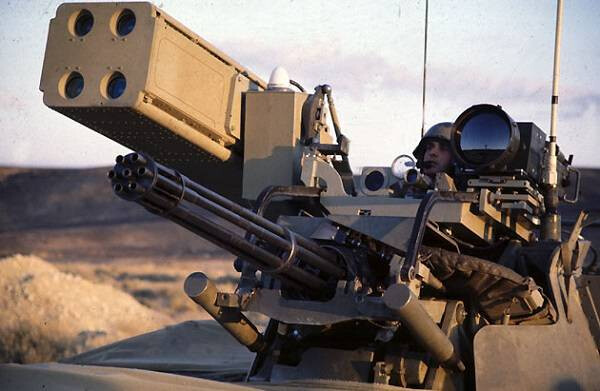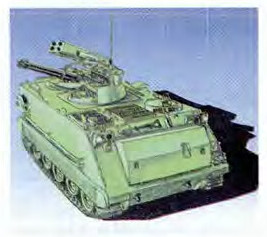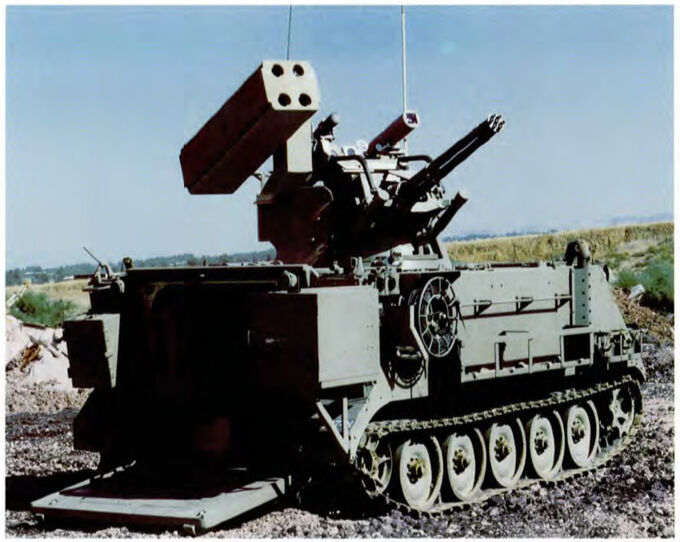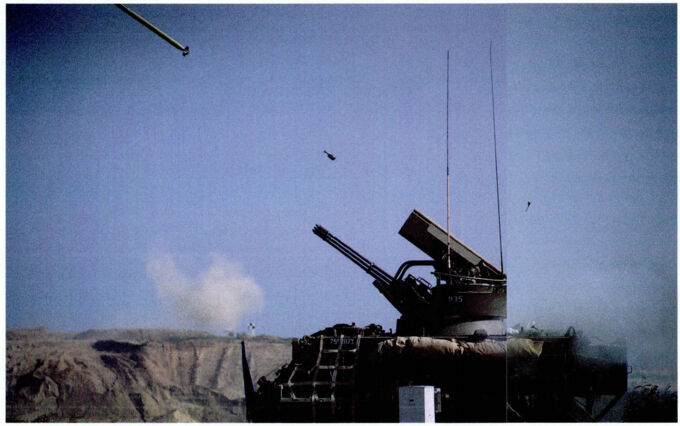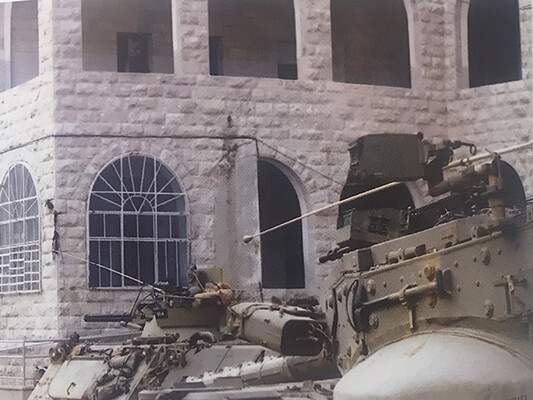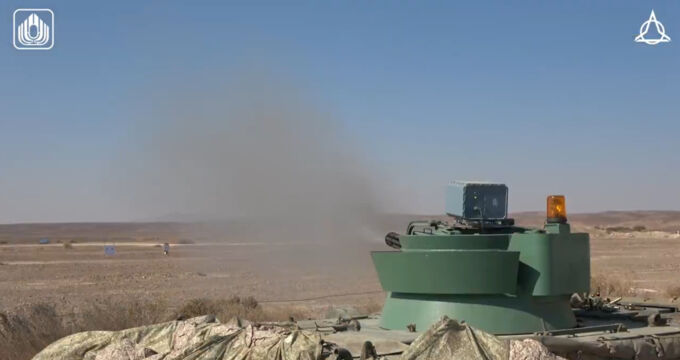The Machbet is a self-propelled anti-aircraft system developed by IAI (Israel Aerospace Industries) during the first half of the 1990s. The Machbet goal was to upgrade the existing M163 VADS to modern standards and to extend its range and capabilities. It officially entered into service in the Israeli Air Force (IAF) anti-air division in 1997. This article aims to offer the reader an overview of its history during the almost 10 years of service in the Israeli armed forces.
Development and testing
Until it officially entered into service, the only source of information about the Machbet was the official magazine of the IAF: “Air Force Journal” (בטאון חיל האוויר).
The first public mention of this project was in October 1993. At this point, all the main features of the Machbet we know had already been decided: a Stinger missile pod, a thermal imager, a control unit with radar interface, and the 20mm Vulcan cannon. No photos were yet available, but a concept art was published together with this first article.
In the following two years, the project kept going. Mabat, the division of IAI tasked with the development of the Machbet, delivered the first working prototype to the anti-aircraft division of the IAF in 1995. At this point, additional systems were installed: a GPS navigation device and a video recorder (for view and analysis of training and combat sessions). Details about the remote control unit and the cost of this vehicle also emerged: the Machbet computer is powered by an Intel 486 DX 33 processor (commonly found in laptops at that time), and the control unit comes in the shape of a suitcase, which contains a screen, joystick, and keyboard. The operator can view both the video feed from the gunner’s sight and the radar image from an external regional radar. This allows the commander to choose the target and the appropriate weapon (missile or gun) and to relay such information to the gunner. The total cost of a Machbet unit was 2 million shekels.
Following the creation of this working prototype, IAI and the IAF started conducting tests and exercises to assess the capabilities of this new machine. An important combat simulation scenario took place in 1996, where the Machbet was pitted against several types of aircraft, including: AH-1 Cobras, F-16 fighters, and AH-64 Apaches. The Machbet and its crew would wait in a concealed position in the desert, looking at the radar image and shooting simulated salvos from the Vulcan cannon and Stinger missiles, trying to neutralise flying targets while remaining hidden. This kind of simulation were vital in the refinement process of this new system. The data and feedback gathered from the crew allowed them to fix bugs in the electronics and improve components of this new machine.
In late 1997 the testing phase had come to an end. The Machbet was considered satisfactory, and the decision to press it into service had been made. The first Machbet battalion was created in the beginning of 1998, while the second battalion came into being towards the end of the same year. Their first assignment: joining the defensive operation on the Purple Line, which is the border with Lebanon.
Operational history
As mentioned previously, two battalions received the Machbet as their main vehicle. These battalions were part of the IAF 168th Wing of the Sky Defense Wing, and their main HQ was located in northern Israel.
The duty of these battalions was to deter, detect, and ultimately neutralise threats in the skies coming from the other side of the border. A network of radars constantly kept the area under surveillance, and, during particularly intense periods, these AA battalions would be kept on high alert.
Between routine security duties, the crews would conduct exercises and maintenance on their equipment.
Operation “Defensive Shield”
In 2002, during Operation “Defensive Shield”, battalions 66 and 947 were called to perform a dangerous but highly effective duty: fire support in urban environments.
This was not something unheard of. Already, during the 1982 Lebanon War, M163s of battalion 66 were used in the same role.
The deployment of Machbets began by making their way through Ramallah, using the incredible firepower of the Vulcan cannon to neutralise those enemy positions, which would have been otherwise hard to eliminate. This first part gave the crews, unfamiliar with this kind of fighting, a chance to gain experience and confidence in using this kind of vehicle in such a foreign environment. Even the infantry battalions began to rely on the Machbet's gun to move forward, and these AA vehicles became a central part of the offensive. The enemy realised the difference between tanks and these less armoured vehicles (the chassis of the Machbet is still the same as the M113 APC, made of aluminium) and started using explosives, rockets, and even anti-tank guns against them.
Therefore, new techniques had to be implemented, the most common being Machbets always moving in groups of two to cover each other. Also, since the turret was extremely exposed, gunners added as many pieces of body armour vests around them as possible to provide protection against shrapnel and possibly incoming rounds.
Once the main offensive in Ramallah had concluded, Machbets were ordered to move into Nablus. A coordinated attack during the night was planned, which saw Machbets entering the city from different roads, using their thermal imaging device to fight in the dark. The following days saw fierce fighting, even at very close range, forcing the crews to even use their personal weapons. In some extreme cases, enemy operatives had managed to climb inside Machbets, forcing the other AA vehicles to open fire on them.
In the end, Vulcans were an effective tool and asset during the operation.
“We learned how to operate the tools and how to prevent them from being hit. We were the added value to the other ground forces. At the beginning of the operation, they would treat us like an adjunct to the infantry brigades, whose context no one really understood. They saw a significant difference at the end of the fighting, when the battalion commanders were actually fighting for more Vulcan fire unit assignments. Its firepower, the ability to raise the turrets and fire upwards in built-up areas was a relative advantage.”
2022 interview with Mako — Source
Decommissioning the Machbet
In 2006, four years after the events of “Defensive Shield”, the Machbet system was finally decommissioned by the IAF. Those four years saw some minor improvements to the system, the most notable being the installation of the “Toga” add-on armour, made by Rafael. This armour technology improves protection both against CE threats (HEAT) and high-calibre MG rounds, up to 14.5mm, which were all common threats to this kind of vehicle, especially in situations like those experienced in Ramallah and Nablus.
Routine security duties would continue along the purple line until 2006, when the Machbet ended its duty in the IAF.
In 2012, Battalion 66 was converted into a Home Front Command battalion, while Battalion 947 would be closed in 2009. After its closure, the 947th battalion would be reopened as Unit 947, the first to operate the Iron Dome air defense system.
A new future?
As of summer 2024, rumors started to spread that the IDF had started to remove Machbets from storage and to start a modernisation program. The goal is to use the M61 Vulcan cannon as a tool against the threat posed by drones, something that in the early 2000s was not yet considered.
Several companies, including IAI, Rafael, and Elbit, took part in a showcase for the Israeli MOD in early 2025 of possible anti-drone weapons, including the M163.
